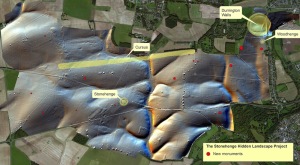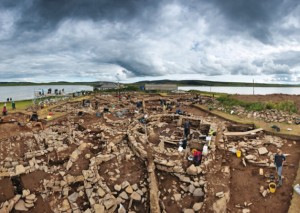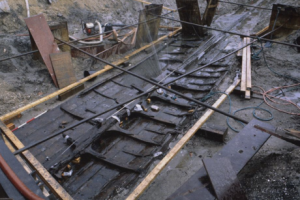Blurb – Stonhenge: What Lies Beneath?
For the last four years archaeologists from Birmingham and Bradford universities, and from the Ludwig Boltzman Institute in Vienna, have been using powerful ground-penetrating radar around Stonehenge. What they have detected is a trove of previously unknown burial mounds, chapels, shrines, pits — and most remarkable of all — a massive megalithic monument made up of more than 50 giant stones buried along a 1,082-foot-long c-shaped enclosure.

If you are interested in knowing more about this magnificent discovery head over to i09.com to read more. You can find the two part series on YouTube Episode 1 and Episode 2.
Enjoy Nerds!


